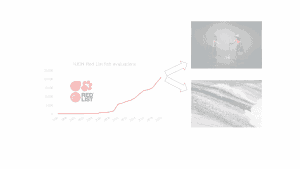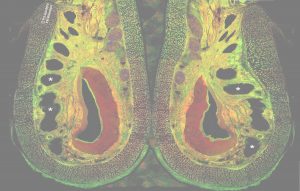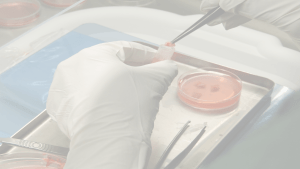Do you like seafood? Do you enjoy eating mussels, scallops, crabs, or lobsters? If so, have you ever wondered why sometimes there are so many food poisonings related to this kind of food? It is not because of the seafood itself, it is because of the presence of marine toxins.
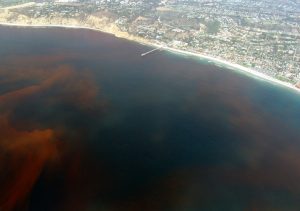
Figure 1. Picture of a red tide La Jolla, California, U.S.A. Image source: Wikimedia.
The principal sustenance for filter-feeding organisms – mainly bivalve shellfish like mussels – are microscopic planktonic algae. These organisms also constitute an important food source for some crustaceans and fishes. There are about 5,000 known marine algal species and approximately 300 of them can grow disproportionately, thus producing the so-called Harmful Algal Blooms (HABs) [1].
HABs cause the discoloration of the water, and have a red or brownish colour, one of the reasons for them to be also known as “red tides”. In addition, some marine algae can glow in the dark by producing bioluminescence. Most of these plankton glow blue, but a few can glow orange, green, or red as well. It is believed that this bioluminescence is produced by the marine algae either as a survival mechanism to frighten their predators or to attract larger predators to the area, causing the algae’s own predators to flee.
As mentioned before, the excessive growth of these marine algae can be very dangerous. The microalgae can form a dense surface layer, which can lead to oxygen depletion, causing the death of fish and invertebrates. This is already a problem from the environmental point of view. Nevertheless, this situation affects the economy at a local or regional level too, as it produces losses in fishing and aquaculture.
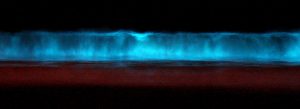
Figure 2. Night picture of a bioluminiscent marine alga, the dinoflagellate Lingulodinium polyedra). Image source: Wikimedia, by Mike.
In addition, some marine algae species can produce potent toxins (named phycotoxins). These toxins rarely affect filter-feeding species, but they can bio-accumulate in the food chain after first being consumed by sea animals, which are eventually eaten by humans [2]. Although cooking seafood or fish can decrease toxin levels and the danger they pose, this process is frequently not enough to completely eradicate their presence: they can still trigger adverse effects if eaten. That is the main reason for seafood poisoning or digestive problems.

Figure 3. Theatrical poster for the film The Birds (1963). Image source: Wikipedia.
There are two main classifications of the marine toxins: one of them is based on their chemical structure, and the second one on the symptoms observed in both experimental animals and human beings. The symptomatology produced by the consumption of poisoned seafood (and less frequently by poisoned fish) is very varied [3]. The most known and frequent effects are gastrointestinal-related (diarrhoea, nausea or abdominal cramps). These are usually mild symptoms, with incubation periods ranging from 30 minutes to 12 hours, with complete recovery within three days. However, it is reported that some cases required the hospitalization due to severe diarrheic illness. More dangerous neurological and cardiovascular alterations can also be produced by some groups of phycotoxins when they reach certain thresholds, such as confusion, disorientation and involuntary scratching between the first, or tachycardia and hypotension between the latter.
Domoic acid (DA), is the phycotoxin responsible of the most dangerous neurological effects observed to date. One example of its alterations could be the event happened in the summer of 1961, when hundreds of usually docile birds attacked people and crashed through glass windows in Northern California. This episode, which is said to have inspired Alfred Hitchcock’s The Birds, could constitute one of the first reports of DA intoxication in recent history. Although the mechanisms of toxin detection were not extensively developed at that time, it is not odd that we could relate this phycotoxin with the birds’ unusual behaviour seen in 1960s.
DA is also responsible for other neurological alterations, like the loss of short-term memory. At high concentrations, this phycotoxin is able to cause death even after consumption of cooked food [4,5,6]. It was responsible for an incident in 1987 in Canada, which caused the death of four people and many neurological alterations in the survivors. One of the intoxicated people was an old woman who showed a loss of short-term memory. She was able to remember that she moved from the United Kingdom to Canada many years ago, but she was not able to remember what she had eaten in the restaurant where she was poisoned [4,5,6].
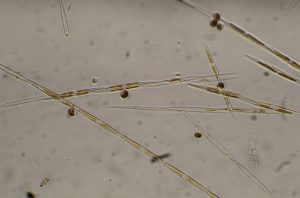
Figure 4. Picture of the diatom Pseudo-nitzschia, one of the marine algae which can produce the toxin domoic acid. This toxin is one of the most dangerous toxins present in the world. At high concentrations, it is lethal in human beings. Image source: Wikimedia, by Oregon State University.
As a result of the harmful effects of the marine toxins in public health and regional economy, a high number of detection methods for measure the phycotoxin concentration in seafood have been developed in many countries. Although the presence of HABs usually involves pausing fishing and aquaculture activities, many marine toxins are dangerous without any visible change in the water. Hence, technologies such as enzyme-linked immunosorbent assay (ELISA) are employed for the detection of the marine toxins in the seafood [7,8]. ELISA is a very common analytical biochemistry assay based on the use of antibodies directed against the protein to be measured. This simple mechanism made this technique very employed in many sectors (including the diagnosis of COVID-19). If the phycotoxin concentration in the organisms exceeds a certain threshold, it means that the seafood in the area cannot be consumed. This is the main reason why the local authorities can stop fishing or aquaculture activity in coast populations for a period of time. As the toxin concentration in the filter organisms can naturally decrease (at the same time they metabolize the marine toxins), fishing and aquaculture activities can be restarted again after having been on hold.
Nevertheless, despite the harmful effects that marine toxins can have on the human population, new approaches to study these natural compounds are becoming more popular. A toxin is basically a very active compound, with a pernicious effect in the organism. That is the reason why some scientists have been studying their mechanisms of action. A better understanding of the harmful effects of the phycotoxins can lead not only to prevent and treat their toxicology, but also because they may be used as a tool for the treatment of very complex illnesses, helping human healthcare in a completely different way [9].
* * *
By Andrés Crespo Vieira (@ACrespoVieira), research assistant at King’s College London.
More information:
- Hallegraeff GM (1993).
- Costa PR, et al. (2003).
- Aune, T. (2001). Risk assessment of toxins associated with DSP, PSP and ASP in seafood. In: W.J. De Koe (ed). Mycotoxins and Phycotoxins in Perspective at the Turn of the Millennium. Proceedings of the X International IUPAC Symposium on Mycotoxins and Phycotoxins, pp. 515–526. Ponsen and Looyen,Wageningen, The Netherlands.
- Perl TM, et al. (1990).
- Teitelbaum JS, et al. (1990).
- Pulido OM (2008).
- Reguera, B (2002). Establecimiento de un programa de seguimiento de microalgas tóxicas. In: Floraciones Algales Nocivas en el Cono Sur Americano; Sar E.A.; Ferrario M.; Reguera B. (eds.). Instituto Español de Oceanografía, Madrid, España.
- Ye W, et al. (2019).
- Russo P, et al. (2015).

